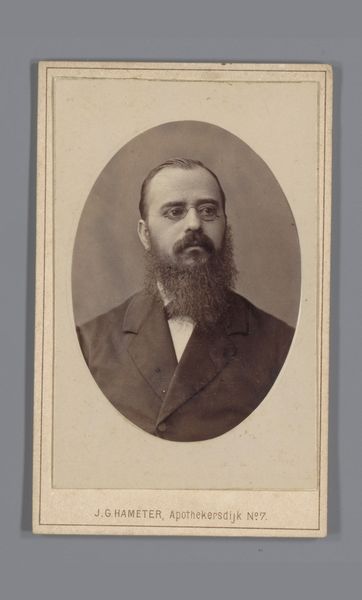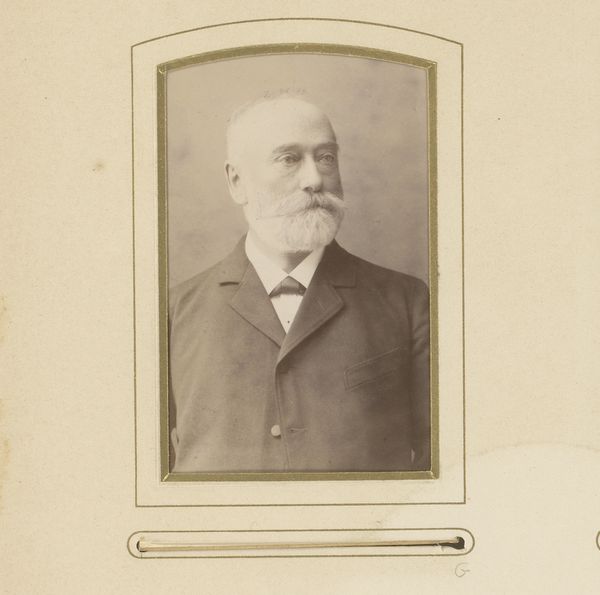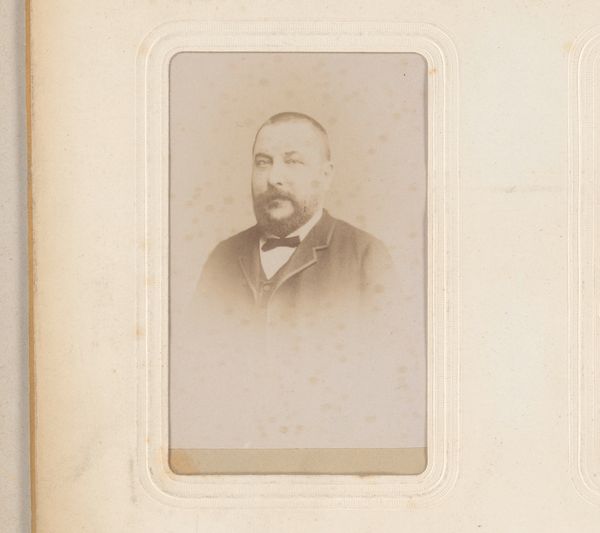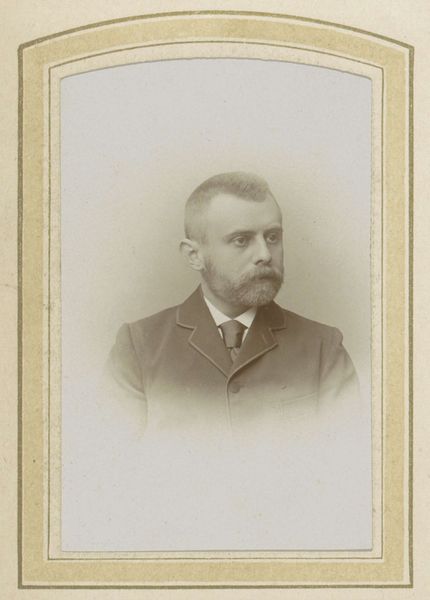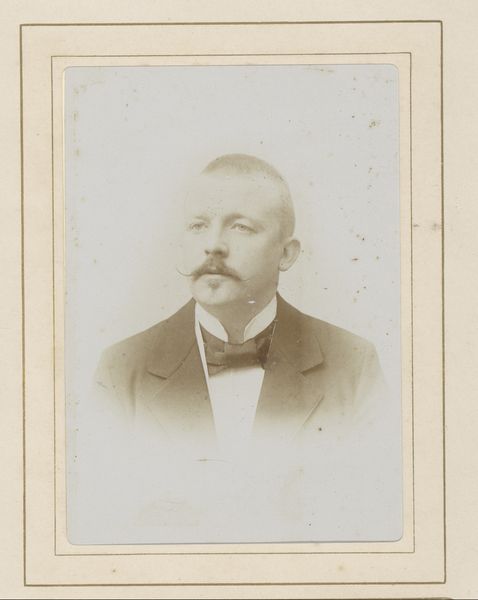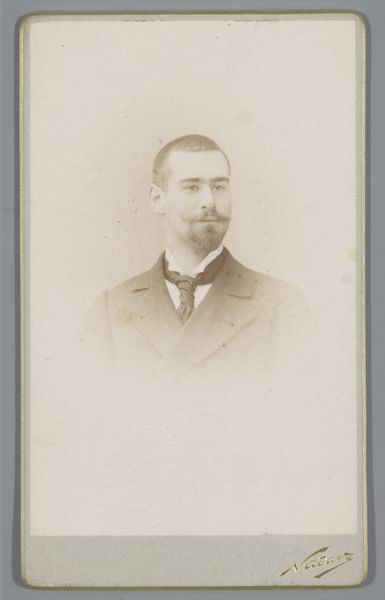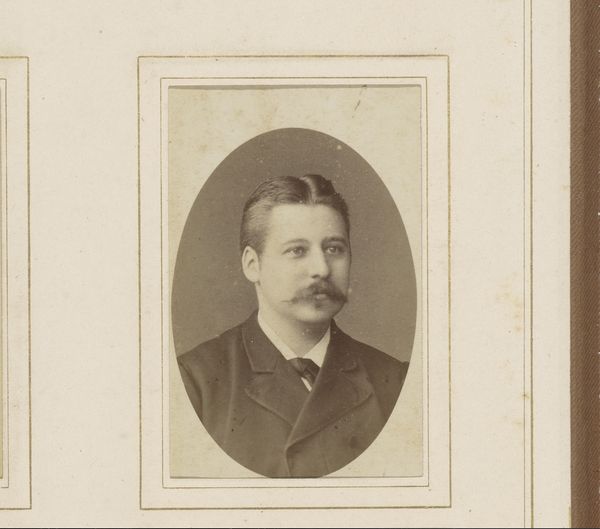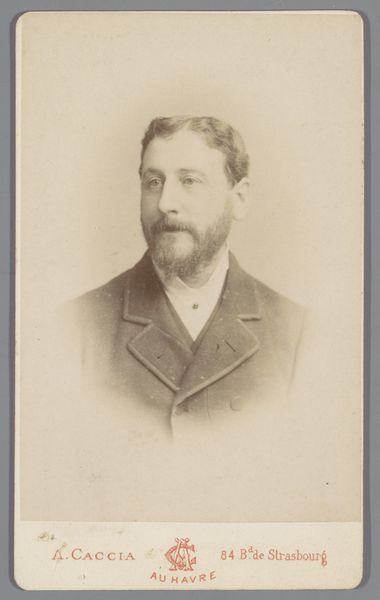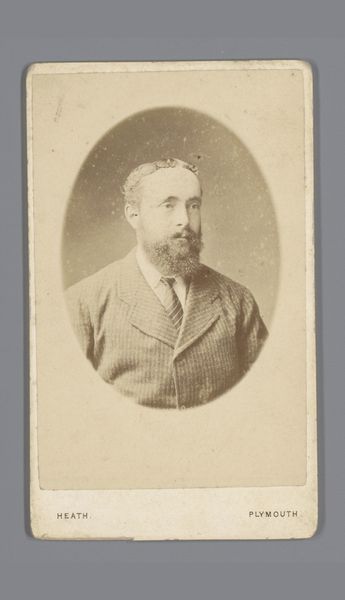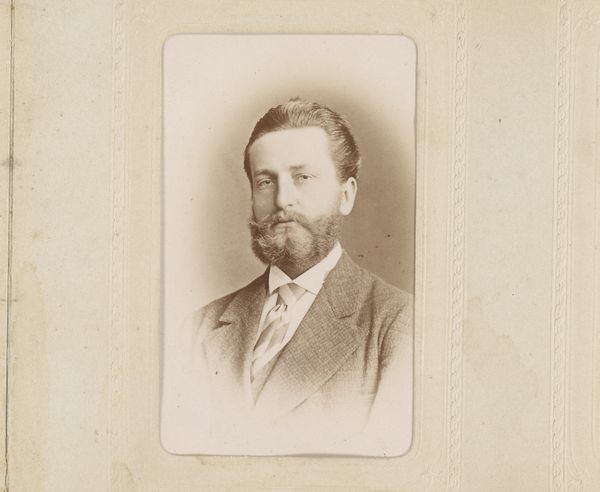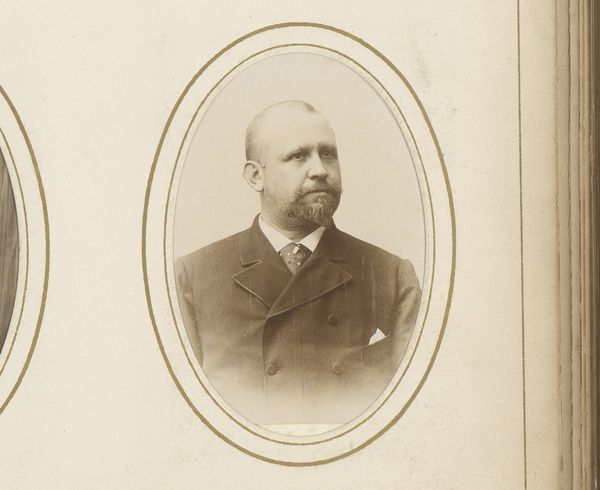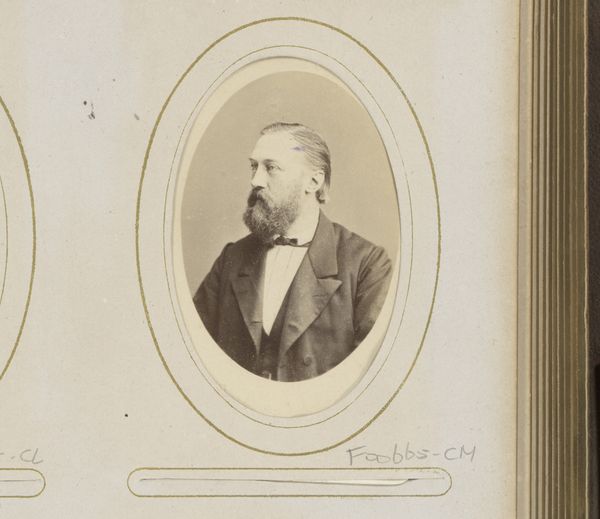
#
photo restoration
#
charcoal drawing
#
charcoal art
#
portrait reference
#
pencil drawing
#
framed image
#
portrait drawing
#
tonal art
#
fine art portrait
#
statue
Dimensions: height 84 mm, width 53 mm
Copyright: Rijks Museum: Open Domain
Editor: Here we have "Portret van een man met snor en baard," or "Portrait of a man with mustache and beard," created between 1893 and 1900 by Julius Cornelius Schaarwächter. It seems to be charcoal on paper. It feels quite formal, yet a bit melancholic. What stands out to you in this portrait? Curator: What immediately captures my attention is how this portrait embodies late 19th-century anxieties around masculinity and representation. Look at the meticulous detail in the beard versus the smoother, almost idealized rendering of the face. It suggests a tension between a cultivated public image and a more raw, perhaps suppressed, inner self. How does this tension speak to the socio-political context of the era? Editor: So, you're saying that the beard might symbolize something more than just facial hair? Like societal expectations perhaps? Curator: Precisely. Consider the rise of scientific discourses around race and physiognomy at the time. Beards were often seen as markers of virility and even indicators of a man’s character. But this man’s gaze is averted, thoughtful, not confrontational. Could this be a subtle commentary on the burden of those expectations, the performance of masculinity itself? Editor: I hadn't considered the averted gaze in that context. It adds another layer of complexity, almost like a quiet act of resistance. Curator: Indeed. And thinking about the sitter's social class adds another point. The bow tie and suit indicate affluence, participation in bourgeois society. Do you think the artist is complicit in reproducing these standards, or perhaps offering a more critical perspective? Editor: I see what you mean! It’s not a straightforward celebration, and that ambiguity makes it more engaging. I’ll definitely look at 19th-century portraits differently now. Curator: That’s the beauty of art history! It’s never just about what's on the surface, but about unraveling the complex stories beneath.
Comments
No comments
Be the first to comment and join the conversation on the ultimate creative platform.
